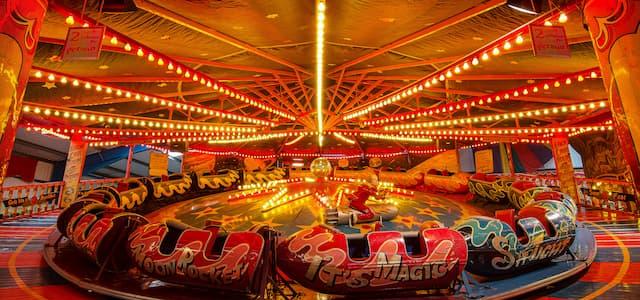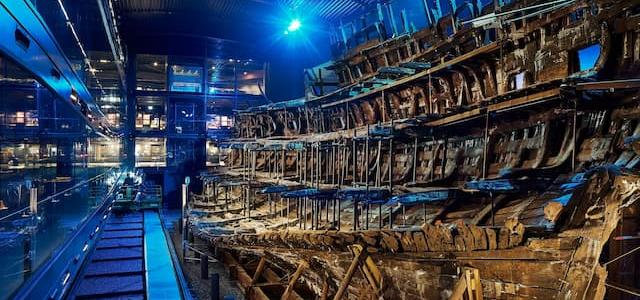
Charles Dickens Museum to acquire major private collection of rare and original material
The Charles Dickens Museum has acquired more than 300 items from the most substantial private collection of Dickens material in the world.

The items acquired by the Museum include 144 handwritten letters by Dickens (25 of which are unpublished), personal items including writing implements and jewellery, original artwork by the illustrators of Dickens’s books, including George Cruikshank, John Leech, Hablot Knight Browne (Phiz), Joseph Clayton (Kyd) and Frank Reynolds, 50 unpublished manuscripts and letters written by others in Dickens’s circle and 25 books from Dickens’s own library.
The Museum’s acquisition, from a private collection in the USA, has been made possible by a generous grant of £1.22million from the National Heritage Memorial Fund, together with substantial contributions from Art Fund, Friends of the National Libraries and the Dickens Fellowship, totalling £1.8m.
The material will provide rich new insights into the life and work of Charles Dickens (7 February 1812–9 June 1870), throwing new light on his personal and business relationships, and state of mind while writing his novels, as well as offering vivid insights into his character 150 years after his death.
The letters are full of irresistible bursts of prose and evidence of Dickens’s lust for language. An unpublished letter written on 5 August 1846, during a visit to Switzerland includes this passage:
'…fancy walking from this [heat] … on to a sea of ice, unfathomable in depth, five and twenty miles long, and tossed up into immense waves, like the spires of Gothic Churches! Picture me clambering over this, with a great leaping pole, and half a dozen iron points buckled on to the soles of my shoes, and washing my face with snow, and going down to drink melted ice like chrystal [sic], and staggering and hauling myself up into places like Dreams, under the direction of a mountaineer-guide…'
One letter illustrates the level of involvement of this most social of authors in the arrangements for a dinner party, whose guest list included Mark Lemon, the founding editor of Punch magazine. Covering instructions for the ‘hall and staircase’, including which doors are to be kept closed, where the coats should be taken and when the curtains should be drawn, the letter reaches a section headed ‘wine’: ‘At supper…a good supply of champagne all over the table. No champagne before supper and as little wine, as possible, of any sort, before supper’. Gin punch to be kept ‘in ice under the table all the evening [to be given] only to myself or Mr Lemon’.
An unpublished letter (9 November 1843) sees Dickens writing A Christmas Carol: "I have half done the Christmas book, and am resting for two days before going to Chuzzlewit [Martin Chuzzlewit, his 6th novel] - that is, if I can call anything rest, with that before me. Yesterday I walked a great deal. Today I am going out on horseback, for a thirty mile ride."
The collection reveals Dickens’s state of mind while writing; the well-known mutual affection between Dickens and his sister-in-law Mary Hogarth, who died at Doughty Street in 1837 at the age of 17, is clear. Dickens drew on his grief at her loss when writing the death of Little Nell in The Old Curiosity Shop. On 22 December 1840, when describing his vision for the illustration of the scene in a letter to the book’s illustrator, George Cattermole, he writes, ‘I am breaking my heart over this story, and cannot bear to finish it’. The letter and a portrait of Kate Nickleby by illustrator Hablot Knight Brown (Phiz), thought to be based upon Mary Hogarth, will be displayed in the room at the Museum in which she died. In another letter (15 January 1841), Dickens writes: ‘I have been breaking my heart with such constancy over the Curiosity Shop, that I have not been able to write one note since I received your welcome letter…’
Dickens’s personal life was full of drama and happiness; one letter (1 January 1848) refers to his wife Catherine’s miscarriage: ‘a miscarriage, in short, coming on, suddenly, in the railway carriage…obliged to call in a famous doctor. She seemed quite well until this morning, when she was again taken violently ill – another famous Doctor called in’. And commenting on their separation, Dickens writes ‘When I was young I made a miserable mistake, that is all’ (8th April 1860). There is also a letter (16 September 1857) to the mother of Ellen Ternan, the woman whose relationship with Dickens led to his separation from Catherine.
A letter of 9 September 1857 recounts the tale of Dickens and Wilkie Collins getting lost up a mountain during a walking tour of Cumberland, due to the directions of an incompetent (according to Dickens) guide: ‘…the Guide might wander where he would, but we would follow a water-course we lighted upon…This necessitated amazing gymnastics. In the course of which performances, Collins fell into the said watercourse with his ankle sprained, and the great ligament of the foot and leg swollen I don’t know how big…what a business it was to get him down…we got off the mountain somehow…I don’t believe he will stand for a month to come! We laugh at it all – but I doubt very much we can go on to Doncaster…he really is so crippled. We have resolved to fall to work tomorrow morning and begin our writing…’
There is a stern letter (14 October 1847) to his younger brother Fred, trying to persuade him not to marry and to his son Charles on bankruptcy (9 August 1868): ‘…the great vague future before you, must be my chief consideration…’
In a 22 February 1842 letter to publisher Jonathan Chapman of Chapman & Hall, celebrating their friendship, he writes “Let the sea rise never so high between us, we will rise higher”.
The collection includes rare unpublished letters from Charles’s father, John Dickens, and the only complete exchange of letters to have survived, an exchange between Dickens and fan Emmey Gotschalk, in which he writes, ‘I am proud to have awakened in your mind the sentiments you so kindly express towards me…’ and, offering advice, ‘…the state of mind which you describe is not a wholesome one…the remedy for it, however, is easy…action, usefulness…Let me have the great gratification of believing, one day, that the correspondence you have opened with me, has done some good, and made a lighter and more cheerful heart than it found when it started…The mystery is not here, but far beyond the sky…’
Amassed over four decades, the collection includes such rare items as the family’s home magazine the Gad’s Hill Gazette, an autograph (handwritten) manuscript excerpt from David Copperfield, personal effects including a golden writing implement which doubles up as both pen and pencil, and a collection of forty beautifully-designed playbills, including very rare notices for private performances at Dickens’s home.
As Dickens’s reputation grew, he became the subject of several artists and the collection includes a delicate drawing in chalk and pastels by Samuel Laurence. A lithograph of this portrait exists, but the original was thought to be lost. This unfinished drawing appears to be a companion piece to another portrait of Dickens by Laurence in the Museum’s collection, and one held by the National Portrait Gallery, both of which date to 1837. There is a very strong case that this is the original drawing and therefore the lost third portrait of Dickens by Laurence from this time.
Among the original drawings are watercolours of scenes from Oliver Twist by illustrator and caricaturist George Cruikshank, who created all 24 illustrations for the novel. Among these is Cruikshank’s final illustration for Oliver Twist, ‘Fagin in the Condemned Cell’.
Elsewhere, a set of household account books from Gad’s Hill Place begins in April 1866 in Dickens’s hand but is completed shortly after his death by his sister-in-law and housekeeper, Georgina Hogarth, with the touching words: ‘So ends the dear Gad’s Hill Housekeeping August 1 1870.’
Cindy Sughrue, Director of the Charles Dickens Museum, said: “This is a treasure trove – a true once-in-a-lifetime moment for the Museum. 150 years after the death of Dickens, it is wonderful to be able to bring such a rich and important collection to the Museum at his first family home. We are immensely grateful to all of the organisations that have supported us so generously, and to the collector for his original acuity and giving the Museum the opportunity of acquiring this collection. We are looking forward to sharing the items with our visitors, both online and in person in the rooms of Dickens’s home.”
Mark Dickens, Chair of the Board of the Charles Dickens Museum, said: “As the great-great-grandson of Charles Dickens, it is an honour to represent the Museum at a highly significant moment in its history. The Museum already holds an impressive collection of Dickens-related material, and this quite staggering material brings us even closer to the man himself, his character, feelings, family and friends.”
René Olivieri, Interim Chair of the National Heritage Memorial Fund, said: “The National Heritage Memorial Fund is delighted to award £1.22m towards bringing this outstanding collection home. Now the largest collection of original material relating to Charles Dickens and his works which was still in private hands has been saved for the nation and can finally be enjoyed and explored by us all.”
Stephen Deuchar, Art Fund Director, said: “This rare collection of personal objects relating to all stages of Charles Dickens’s career will strengthen the Museum’s core collection and shed further bright light on an extraordinary and complex figure.”
Charles Sebag-Montefiore, Treasurer of Friends of the National Libraries, said: “We are delighted to have helped the Charles Dickens Museum to acquire this extraordinarily important collection, which will give new insights into Dickens’s life and work. It will be an invaluable resource for Dickens scholars and add great richness to the experience of the Museum's physical and online visitors”.
Paul Graham, Honorary General Secretary of the Dickens Fellowship, said: “Ever since the Fellowship bought 48-49 Doughty Street in 1922 and opened it as a Museum in 1925, it has actively sought to support the Museum in developing its collection of items relating directly to Dickens’s life and works. We are delighted to be able to assist the Museum in acquiring this wonderful and unique collection of material.”
The Charles Dickens Museum is at the Bloomsbury townhouse into which Dickens moved with his young family in 1837. It holds the world's most comprehensive collection of material relating to the life and work of Dickens, including the desk at which he wrote his later novels, including Great Expectations, A Tale of Two Cities, Our Mutual Friend and The Mystery of Edwin Drood. When Dickens moved to Doughty Street, he was a little-known writer, still using his pen-name, Boz; by the time he left, he was an international superstar.

